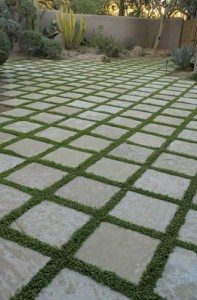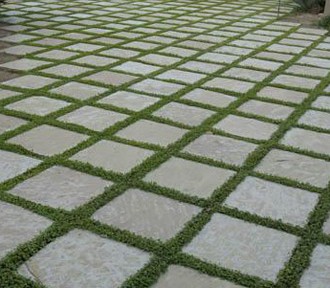Tiles for outdoor use or outdoor tiles are a popular choice for various homeowners. Though they are commonly used for patios, they also have many other uses such as for porches, decks, walkways, terraces, pools, fountains and property walls. Many people choose them because of their advantages over other construction materials which outweigh any disadvantages they might have.
Outdoor Tile Advantages
Generally, outdoor tiles are more durable, safe, chemical resistant, hygienic, elegant, diverse and affordable than other materials for outdoor use.
Durable
Tiles which are made of ceramic or porcelain and even mosaic are durable because of their low absorption feature which enables them to resist moisture. As a result, water cannot seep into the tile to cause its deterioration. Moreover, this feature also prevents them from cracking due to freezing and is therefore ideal for extremely cold temperatures. Generally, they can last longer than other materials. This is especially true for full-body porcelain tiles which do not deteriorate easily as color is permeated throughout the breadth of the tile. Between them however, porcelain tiles which are made from more refined white clay, are more durable and therefore more suitable to withstand changing climates outdoors.
Rubber tiles can likewise resist weather conditions but must be treated in order to avoid seeping of moisture particularly in humid or damp environments.
Temperature Resistant
Some outdoor tiles such as those made of ceramic are impervious to extreme hot and cold temperatures including fire and frost. Rubber tiles on the other hand, are resistant only to smaller types of heat sources such as cigarette burns.
Safe
As flooring, outdoor tiles are not as slippery as other materials and therefore minimize the likelihood of accidents especially during wet weather or freezing temperatures. Rubber tiles, which are quite soft, provide safety cushions outdoors, especially in playgrounds.
Easy to Maintain
Ceramic and porcelain tiles are easy to maintain because they are glazed or coated with a liquid glass in order to protect them from stains which also makes cleaning them an easier task. Although outdoor conditions entail the use of unglazed floor tiles for a more textured surface to prevent slipping, the glazed varieties may be used for walls, pools or fountains. Rubber tiles also require low maintenance because they are more resistant to stains.
Chemical Resistant
Unlike other materials which may possibly rot or corrode with exposure to chemical agents, outdoor tiles made of ceramic and porcelain are chemical resistant.
Hygienic
Outdoor tiles do not possess chemically active properties and therefore inhibit the development of viruses, molds, fungi and other bacteria.
Elegant
As opposed to an unpolished finish provided by other outdoor materials, tiles achieve a more elegant and sophisticated look.
Diverse
Porcelain and ceramic tiles present a wide range of choices in terms of size, color, texture, design and style. Rubber tiles likewise provide various color and style options for the discriminating taste.
Environment- Friendly
Made of natural clay and other raw materials, ceramic tiles do not necessitate the exploitation of environmental resources like trees or plants in construction. It also does not entail the use of harsh chemicals for cleaning which may otherwise be harmful to the environment.
Affordable
In the long run, tiles turn out to be more affordable. Considering all other costs however, including installation and maintenance, ceramic tiles are deemed to be most economical.
Advantages Of Other Outdoor Materials
Aside from tiles, other materials like marble, travertine (natural stone) or slate may be used for outdoor needs. Like tiles, these materials also have their advantages including durability, comfort, elegance, versatility and low maintenance.
Durability
Marble, travertine and slate are extremely hard and considered among the most durable materials, surpassing the strength of tiles.
Comfort
Unlike tiles which are cold during cold weather and hot during hot weather, marble is refreshingly cool to the feet during extremely hot weather.
Elegant
While tiles give an air of elegant sophistication, marble, travertine and slate emit natural elegance.
Versatility
Marble, travertine and slate can be used indoors and outdoors. They are more versatile than tiles in the sense that they may even be used for furniture like tables.
Outdoor Tile Disadvantages
Tiles also have their disadvantages including being uncomfortable, destructively hard, difficult to maintain, somewhat expensive and unhygienic.
Uncomfortable
During cold weather, tiles make our feet feel colder. Likewise, they retain heat during hot weather, making the area in which it was used uncomfortably hot.
Destructively Hard
Due to their hardness, tiles often cause the destruction of objects that may fall on them such as glass. They can also bring some destruction upon themselves such as cracks when heavy objects fall on them.
Difficulty in Maintenance of Grout Lines
While tiles are generally easy to maintain, grout lines require a bit more attention since they are prone to stains and mildew build-up.
Expensive
While ceramic tiles have been deemed to be the cheapest and porcelain tiles the least costly in the long run, rubber tiles of good quality are considered quite expensive.
Disadvantages Of Other Outdoor Materials
Like tiles, other outdoor materials also have their disadvantages including discomfort, high costs, slipperiness, superficial damages, high maintenance, vulnerability to changing weather conditions and are unhygienic.
Discomfort
The same discomfort produced by tiles during cold weather is also given by slate and marble. Its extreme hardness also causes some strain on the leg joints.
High Costs
Slate and marble can be quite expensive. In fact, the thickness, color and patterns are directly proportionate to their price. In fact, installation requirements entail technical knowledge and expertise therefore contributing to increased costs.
Slipperiness
As flooring, outdoor other materials pose the problem of being more slippery than tiles.
Superficial Damages
Slate is susceptible to stains and can easily have superficial damages such as scratches, discoloration, chips and cracks especially when exposed to acidic elements or when heavy objects are dropped on it.
High maintenance
Slate requires a specific stone cleaner for its maintenance while marble must be polished regularly to maintain its gloss.
Vulnerability To Changing Weather Conditions
 While travertine is considered as one of the hardest and most durable materials, its ability to absorb moisture does not make it ideal for outdoor use as it can be prone to cracking and breaking under climate conditions where freezing and thawing may be experienced.
While travertine is considered as one of the hardest and most durable materials, its ability to absorb moisture does not make it ideal for outdoor use as it can be prone to cracking and breaking under climate conditions where freezing and thawing may be experienced.
Unhygienic
Other outdoor materials like marble, travertine and slate greatly absorb moisture thereby promoting the growth of molds and other bacteria.
Given all the advantages and disadvantages of using tiles outdoor tile as against choosing other outdoor materials, we should decide on which materials we should use for our own homes and outdoors depending on which factors weigh more for us.
